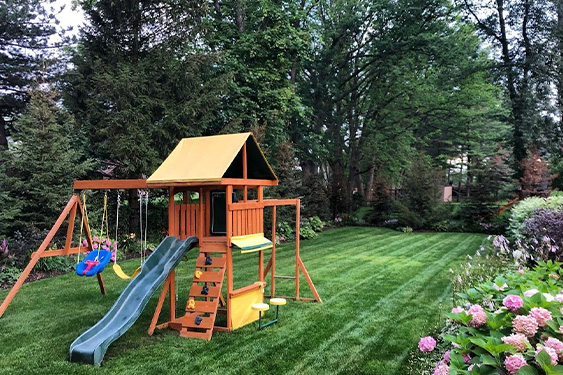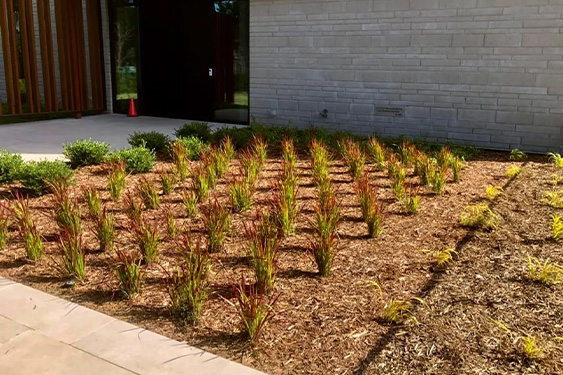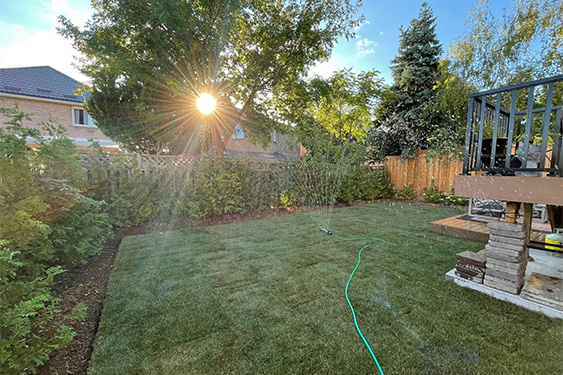Transform Your Property Value with These Landscaping Secrets
Ever wonder why some homes instantly grab your attention? Often the answer lies in their stunning landscapes. In the world of real estate, landscaping is more than just an aesthetic choice—it’s a strategic investment that can significantly enhance a property’s allure and value. Whether you’re a homeowner looking to boost curb appeal, a real estate investor aiming for higher returns, or a garden enthusiast passionate about creating beautiful outdoor spaces, understanding the impact of landscaping on property value can be a game-changer.
In this blog post we will explore how landscaping influences property value, backed by compelling statistics and real-life examples that demonstrate its importance. You’ll learn about the various elements that contribute to an attractive landscape, such as the choice of plants, the design layout, and the integration of hardscaping features like walkways and patios. We also delve into current trends, including sustainable practices that are not only eco-friendly but also appealing to modern buyers.
Moreover we will discuss the pros and cons of tackling landscaping projects yourself versus hiring professionals, offering insights to help you decide the best approach for your situation. From budget considerations to the potential return on investment, we’ll cover it all. Let’s dig in and uncover the secrets to making your property stand out with exceptional landscaping!
The Direct Impact on Property Value
Statistical Analysis
Landscaping is not just a “nice-to-have”; it directly impacts property value. Studies show that well-landscaped homes can see a price increase of up to 20%. For instance, a home valued at $300,000 could potentially increase to $360,000 with proper landscaping improvements. According to the National Association of Realtors, landscaping is one of the top three investments that bring the highest return on investment (ROI), often surpassing other home upgrades like kitchen renovations or new roofing.
Landscaping doesn’t just add financial value. It also enhances curb appeal and creates an inviting environment that can attract potential buyers more quickly. Features such as manicured lawns, colorful garden beds, and well-placed trees can transform the aesthetics of any property. Imagine transforming your $300,000 home into a $360,000 asset simply by enhancing its landscape! The impact of a well-designed outdoor space goes beyond mere numbers—it contributes to the overall enjoyment and functionality of the home.
We will link you a report from the National Association of Realtors to give you more insights:
Link 1: Remodeling Impact Report: Outdoor Features
Link 2: Improving Curb Appeal, and Homeowners Can Benefit Financially and Emotionally by Remodeling Outdoor Features, NAR-NALP Report Finds
Factors That Influence Value
Key Elements
Several elements contribute to increased property value through landscaping. These include:
- Lush Lawns: Well-maintained lawns create a welcoming first impression, making the property appear cared for and loved. Regular mowing, watering, and fertilizing keep the grass green and healthy, which can significantly boost curb appeal.
- Garden Beds: Flower beds add color and vibrancy, catching the eye of potential buyers and visitors. A variety of plants can be used to create seasonal interest year-round, from spring blooms to autumn foliage. Properly designed and maintained garden beds showcase the property’s aesthetic appeal and attention to detail.
- Trees and Shrubs: Mature trees and shrubs offer shade and privacy, essential for both residential and commercial properties. Trees can reduce energy costs by providing natural cooling, and shrubs can act as natural barriers for noise and wind. Additionally, they contribute to the overall landscape architecture, creating a sense of permanence and stability.
Tips for Homeowners
For homeowners on a budget, cost-effective improvements can still make a big difference. Consider:
- Mulching garden beds to maintain soil moisture, suppress weeds, and add a polished look to your garden. Mulch can also help regulate soil temperature and improve soil health over time.
- Edging lawns for defined boundaries. A clean edge between your lawn and garden beds not only looks tidy but also prevents grass from creeping into your flower beds, making maintenance easier.
- Planting perennials that come back year after year, saving costs on replanting. Perennials often require less maintenance than annuals and can provide continuous blooms and foliage, enhancing the beauty of your garden through the seasons.
By incorporating these simple yet effective strategies, homeowners can achieve an attractive and well-maintained landscape without breaking the bank.
Trends in Landscaping
Current Trends
Landscaping trends are constantly evolving, reflecting changes in climate, technology, and lifestyle. Some current and emerging trends include:
- Xeriscaping: Using drought-tolerant plants to save water. This method is particularly popular in arid regions where water conservation is crucial. It not only reduces water usage but also minimizes maintenance. Xeriscaping involves selecting plants that are native or well-adapted to the local climate, which can thrive with minimal irrigation. This approach also enhances the natural beauty of the landscape by using plants that are suited to the environment.
- Vertical Gardens: Perfect for small spaces, adding greenery without taking up ground area. These gardens can be installed on walls and are ideal for urban environments where space is limited. They also provide insulation and improve air quality by filtering pollutants and producing oxygen. Vertical gardens can range from simple DIY projects with climbing plants to sophisticated installations with hydroponic systems. They offer a versatile solution for adding nature to balconies, patios, and even indoor spaces.
- Edible Landscaping: Incorporating fruits, vegetables, and herbs into your landscape. This trend promotes sustainability and allows homeowners to grow their own food, reducing the need for store-bought produce. It also adds a unique aesthetic and functional value to the garden. Edible landscaping can range from integrating a few herb plants into a flower bed to designing an entire garden space dedicated to food production. This approach not only provides fresh, organic produce but also encourages biodiversity by attracting pollinators and beneficial insects.
- Smart Irrigation Systems: Leveraging technology to optimize water usage in gardens and lawns. These systems use sensors, weather data, and automated controllers to deliver the right amount of water at the right time, reducing waste and promoting plant health. By integrating smart irrigation systems, homeowners can save water, reduce utility bills, and ensure that their landscapes receive optimal care. This trend reflects the growing interest in smart home technologies and sustainable living practices.
Each of these trends offers a unique way to enhance outdoor spaces, making them more efficient, sustainable, and enjoyable for homeowners and their families.
Incorporating Trends
To incorporate these trends into your property, start small. Try introducing a vertical garden on a blank wall or replace part of your lawn with xeriscaping. For edible landscaping, consider planting a mix of herbs like basil and thyme along walkways.
Landscaping for Environmental Sustainability
Role of Sustainable Landscaping
Sustainable landscaping not only boosts property value but also conserves the environment. By using native plants, reducing water usage, and incorporating eco-friendly materials, you contribute positively to environmental conservation.
Practical Advice
Creating an eco-friendly landscape doesn’t have to be complicated. Here are a few tips to get you started:
- Rain Gardens: Planting a rain garden helps capture runoff water from roofs, driveways, and other surfaces, reducing erosion and pollution while creating a beautiful, low-maintenance feature.
- Composting: Turn your kitchen scraps and yard waste into nutrient-rich compost to enrich your soil. This not only reduces waste sent to landfills but also enhances the health of your plants.
- Solar Lighting: Install solar lights to reduce energy consumption and lower your utility bills. Solar lighting provides an environmentally friendly way to illuminate your landscape, enhancing safety and aesthetics without relying on electricity.
Hiring Professionals vs. DIY
Pros and Cons
When it comes to landscaping, you have a choice: hire professionals or take the DIY route. Each option has its own set of advantages and disadvantages.
Professionals:
- Pros: Hiring professionals brings expertise to the table. They have the knowledge and experience to deliver faster results and have access to high-quality materials that may not be available to the general public. Plus, their professional touch can add significant value to your property.
- Cons: The main drawback is the higher upfront cost. Professional services can be expensive, and depending on the scale of the project, this can be a majorDIY:
- Pros: The DIY route is often more cost-effective, as you can save on labor costs. There is also a sense of personal satisfaction that comes with completing a project yourself. Additionally, you have complete control over every aspect of the project, from design to execution.
- Cons: DIY projects can be very time-consuming, especially if you do not have prior experience. There is also the risk of achieving a lower quality result compared to what professionals could deliver, which might end up costing more in the long run if you need to make corrections.
Finding Reputable Landscapers
If you decide that hiring professionals is the best route for you, it’s crucial to ensure they are reputable and reliable.
- Reviews and Testimonials: Look for reviews and testimonials from previous clients. These can provide valuable insights into the landscaper’s reliability, work quality, and customer service.
- Past Projects: Ask to see past projects that are similar to what you have in mind. This will give you a sense of their style and capability, and whether they can meet your expectations.
- Certifications: Check for certifications from recognized landscaping organizations. These certifications can be an indicator of their level of professionalism and commitment to industry standards.
Following these steps can help you find a landscaper who will realize your vision with exceptional quality and professionalism. If you prefer to tackle your project, we offer expert residential landscaping services and commercial landscaping services.
The Oakly Conclusion
Landscaping is more than just a visual upgrade—it’s a vital investment that enhances property value, supports the environment, and brings joy to homeowners and communities alike. By understanding the factors that influence landscaping ROI, keeping up with trends, and deciding between DIY and professional help, you can make informed decisions that benefit both your wallet and your well-being.



